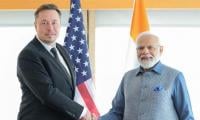In the backdrop of the drama surrounding the Panama Papers, it has become imperative to look into the connection between Pakistan’s political fortunes and its economic cycles. In order to grasp the story completely, one has to start from the country’s very first economic cycle.
After World War II and the years leading up to Partition, the transition from a war economy had slowed down United India’s economy. The Index of Industrial Activity declined by 21 percent in the three years leading up to 1947-48. This trend was carried forward to an extent into Pakistan’s economy till 1953. But by the mid-1950s, the economy was ripe for an expansionary phase.
In February 1955, Pakistan joined Cento, the US-sponsored military alliance. However, the aid that was provided under it did not become significant till 1960 – two years after the imposition of the first martial law.
US aid to Pakistan rose from approximately $150 million in 1954 to $2 billion in 1962. Though the aid inflows did assist in achieving high growth rates during the 1960s – with a GDP growth of 10.4 percent in 1963 that eventually peaked to 11.3 percent in 1969 – they also coincided with the point of the natural bottoming-out of the economy and an augmentation of the cold war effort by the US and its allies against the communist bloc.
These inflows marked the beginning of a pattern of US aid inflows that picked up right when Pakistan’s strategic importance heightened – usually following a military regime that was already in place and in its second year at the helm.
Interestingly, official inflows from the US – or any foreign resource inflow for that matter – were nil when most needed by the newborn nation with a fledgling democracy in 1949-50. They were 1.1 percent of the GDP in 1954-55 and peaked in the backdrop of the first martial law regime to 8.9 percent of the GDP in 1964-65. It plummeted to an abysmally low one percent of the GDP in 1972-73 – when democracy returned to the country – and subsequently rose to a new high of 9.1 percent of the GDP in 1981-82 – rather unsurprisingly during the country’s third martial law regime.
The aid quantum remained high throughout the 1980s. Like the 1960s, there was a planned surge of America’s anti-communist activity in the region and a military government had installed itself in 1977 shortly before the surge. In 1978, the CIA had begun a covert action against the communist-allied Afghan government. The CIA had begun training Afghans, beaming radio propaganda and meeting opponents of the Afghan government with a view to start an insurgency to “suck the Soviets into a Vietnamese quagmire”.
In August 1979, there was a major revolt in Afghanistan’s Herat province.
US president Carter formally approved a covert aid to the opponents of the government in July, which resulted in the Soviet invasion in December. The USSR withdrew in 1989.
In 1990, president Bush failed to certify the absence of nuclear weapons in Pakistan. As a result, aid was cut off to Pakistan under the Pressler Amendment. Even the USAID mission in Pakistan remained closed for eight long years. The attention of the US had been diverted to Iraq.
True to its pattern, meaningful US aid resumed during the fourth martial law regime in 2001. The US once again had an interest in the region and needed Pakistan. 9/11 was obviously the trigger. But the US had linked the attacks on its installations across the world throughout the 1990s to Osama bin Laden, the intensified hunt for whom had entered this region. The rest, as we all know, is history.
It is important to note that US assistance has always coincided with the points in the macroeconomic cycles where the negative cycle is about to end naturally as a result of balancing, modernisation and replacement and the increased spending in the economy to replace ‘things’ – factories as well as worn-out household durables – through built-up savings and credit. These savings, once exhausted, need time to be rebuilt and translated into future purchase orders that would trigger the next expansionary cycle.
In the 1990s – even before US interest and aid – the contraction in Pakistan’s economic activity was bottoming out. Growth had flattened to around 4.4 percent of the GDP. A military regime was installed in Pakistan in 1999. Like in the past, the US aid started picking up towards the end of the second year of the military regime. The US official assistance picked up from $36 million in 1998 to around $4 billion in 2002 and sustained at these heightened levels throughout Musharraf’s regime.
Another integral point to be noted is that although the strategy for economic management during military regimes has been slightly tighter than the policy adopted by their civilian counterparts, no drastic change in economic policy was witnessed during any of the four martial laws. This is the reason why structural bottlenecks in the economy persist to date.
The economy boomed during the 2000s. The GDP growth peaked at nine percent in 2005. All credit went to the better economic management of the then dictatorial regime. The natural low point of the economy, with a little help from the aid inflows that followed, had done it once again. By 2008, the cycle had been completed. During the same year, there was a huge drawdown of almost 50 percent in the foreign currency reserves of the country. The military dictator had also gone by then and the situation was to be handled by the next civilian government.
In 2013 – the fifth year into the recessionary cycle that began in 2008 when the average GDP growth stood at around 4.1 percent like in the 1990s - the current government came into power. This traditional 10-year trough depicting the economically slow period of consolidation that had preceded all the previous booms, military regimes and aid inflows is now almost at its end. The expansionary phase of the economy should gradually unfold itself in the years after 2018.
However, the Nawaz government deserves no credit in this regard as it has been as status quo-oriented in removing the structural bottlenecks of our economy as any other regime in the past.
The question that now arises is: will the pattern materialise again?
The US is ushering in a new military alliance against Iran in the region and a new US surge in Afghanistan is in the offing. Some similarities most certainly exist, with the exception of a crucial yet minor detail: unlike 1957, 1977 and 1997, Pakistan has already started receiving external financing before the end of the usual 10-year recessionary/civilian period between martial laws. This time around, the funds are coming from the East and not the West. Let’s see if similar indicators produce similar results every time.
The writer is a freelancecontributor.
Email: haroonmuzafar@gmail.com
The cases of Attabad Lake and Gwadar simply highlight the many tragedies that exist around the country
Reaffirming loyalty to democracy as a problem solver can be a good starting point
Unfortunately, Pakistani films and TV dramas have seldom ventured beyond domestic intrigues and love triangles
A woman walks past a building of the International Monetary Fund. — AFP/FileThe annual and spring meetings of the...
Late Benazir Bhutto's daughter Asifa Bhutto Zardari addresses the Christian community in Bihar Colony on January 23,...







